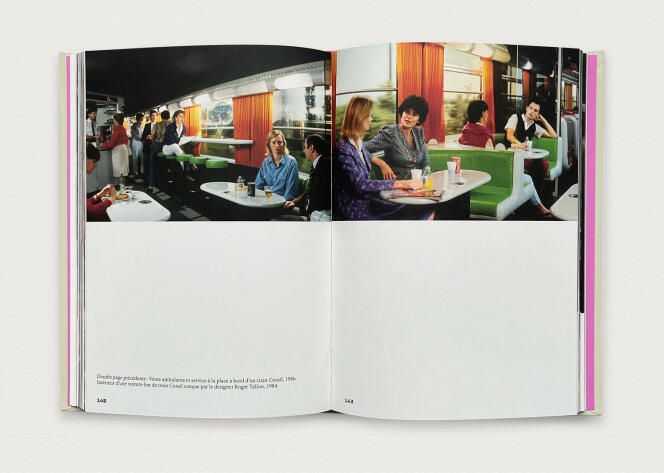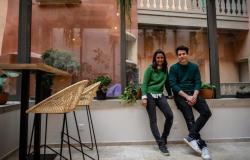
CIt’s a croque-monsieur in a cardboard container or a dish reheated in the microwave, a canned drink or 25 cl wine, all enjoyed on a small piece of counter with paper napkins and wooden cutlery… yet, the passage to the bar car is not so insignificant. Since its appearance at the end of the 19th centurye century, this confined catering space has continued to evolve, reinvent itself – and cultivate its own food codes, always reflecting the times.
The aesthetics of meals on rails piqued Arthur Mettetal’s curiosity. Assisted by Jean-Pierre Williot, professor of economic history at the Sorbonne, and Grégory Nolan, director of the documentation department of the SNCF, the historian, a specialist in railway and industrial heritage, delved into the archives of the former Compagnie internationale des wagons-lits and the SNCF group.
Together, they have unearthed more than a hundred photographs of rare documentary value, which are the subject of an exhibition (on view until September 29) at the Rencontres de la photographie d’Arles, called “Wagon-Bar. A short history of the railway meal” –, and the publication of a book by Editions Textuel.
Red leatherette armchairs and crab mayonnaise sandwiches
Through these photographs, sometimes advertising, we first delve into the golden age of food on wheels, during the interwar period, when wealthy travelers dined aboard luxurious Pullman cars (decorated by René Prou), with white tablecloths and silver cutlery. The narrow on-board kitchens (8 square meters) offered elaborate menus and had their own dedicated brigade. In the 1950s, society evolved: self-service, street vending and cars appeared « bar et snack ».
We then navigate, still at full speed, between the meal trays of the Corail trains that we consumed as a family, in the 1960s, on red leatherette armchairs, to the outdated kitsch of certain preparations (crab mayonnaise sandwiches, gelatin-based desserts), passing by the futuristic decoration of the bar cars of the TGVs of the 1990s, in the shape of spaceships, modeled by the industrial designer Roger Tallon.
Read also | Catch-up sessions in the kitchen
Add to your selections
Incidentally, the authors reveal to us a company report on the behind the scenes of the manufacture of… the triangle sandwich. “While the images in this book are intrinsically linked to the railway universe, those specifically devoted to the shooting of various dishes and snacks fall under the heading of “gastronomic literature”, in the same way as cookery or recipe books”, concludes Arthur Mettetal.
Wagon-Bar. A short history of the railway mealedited by Arthur Mettetal, Textuel, 224 p., €29.








